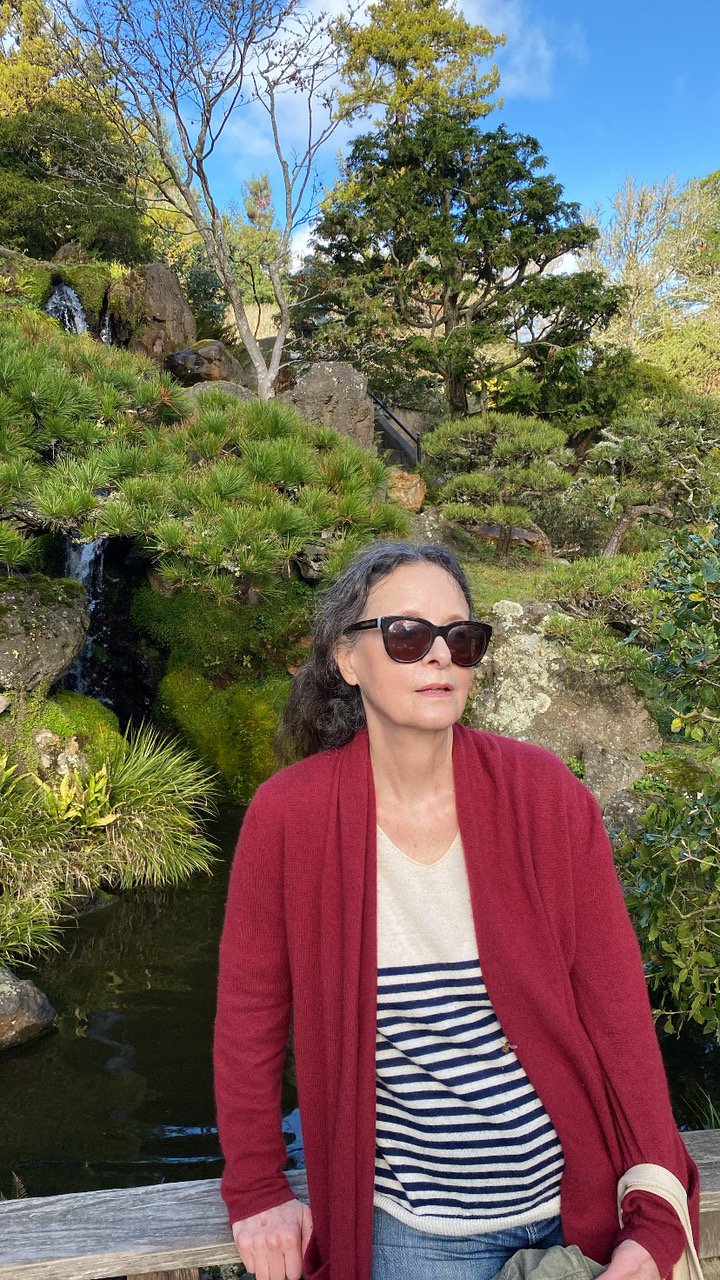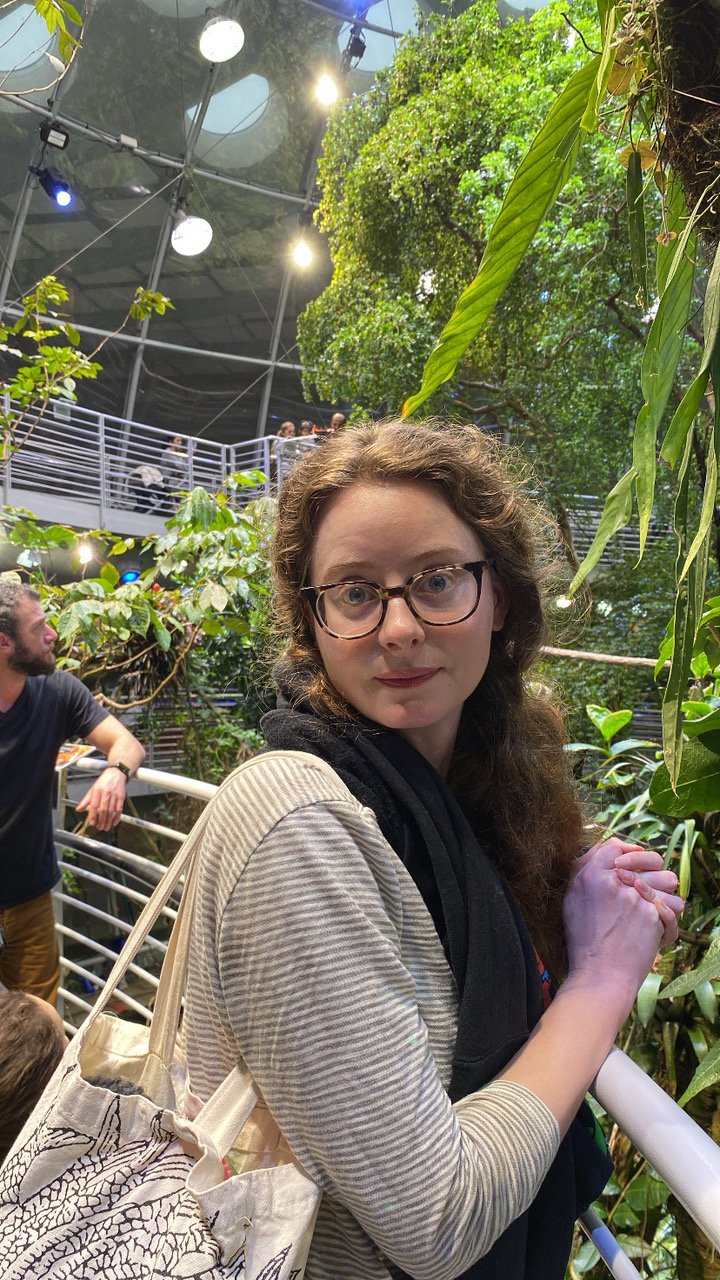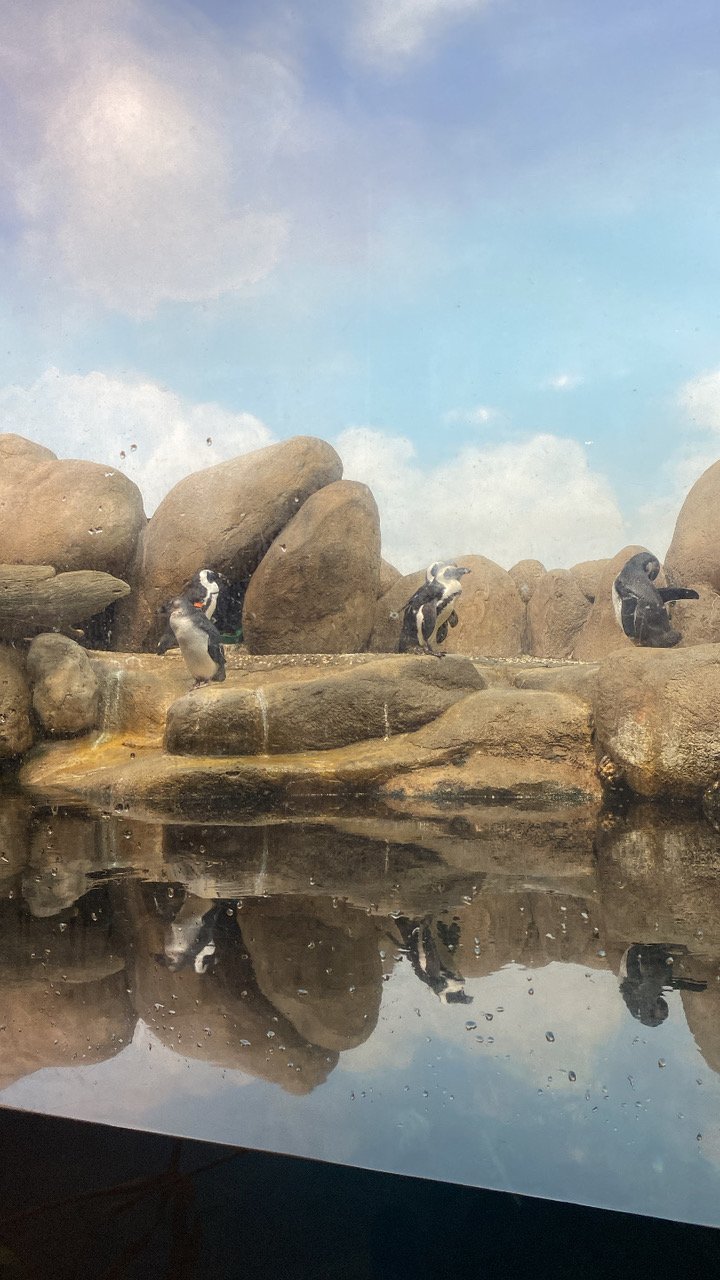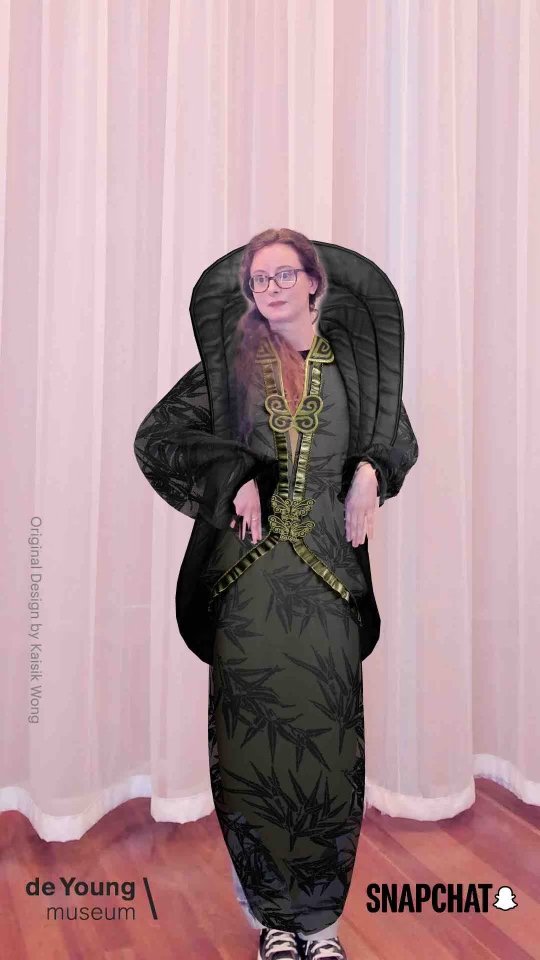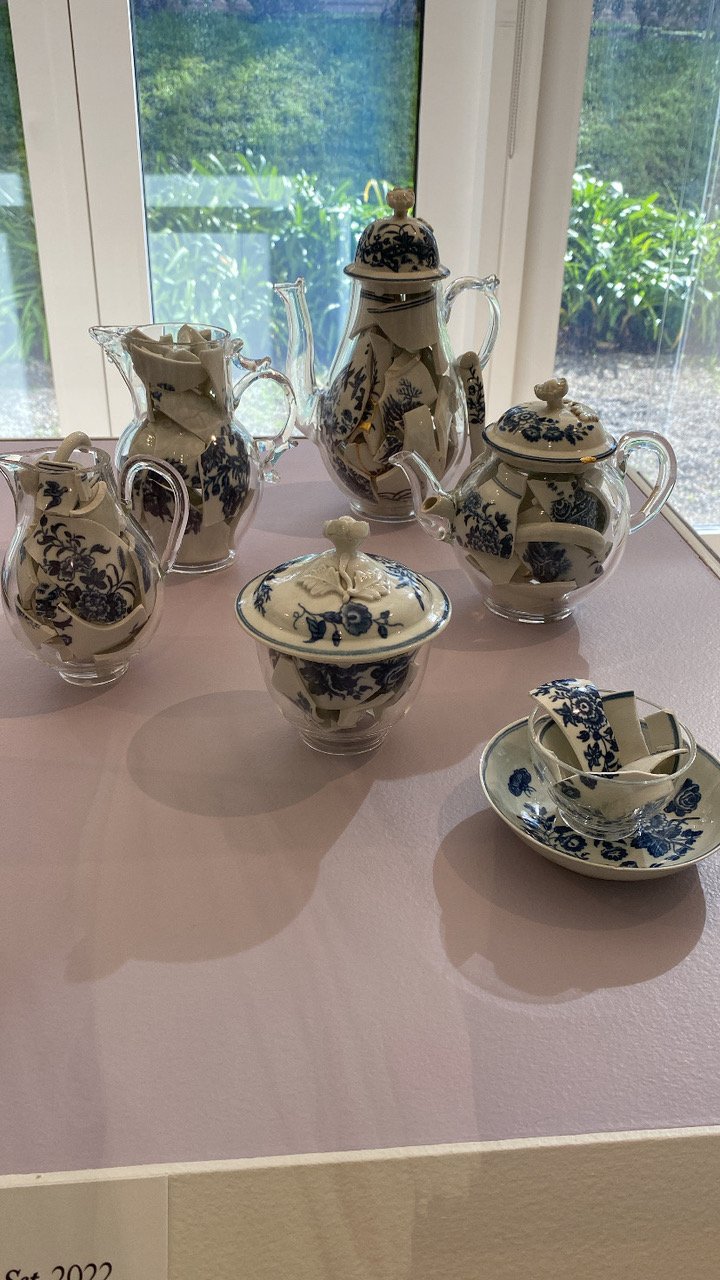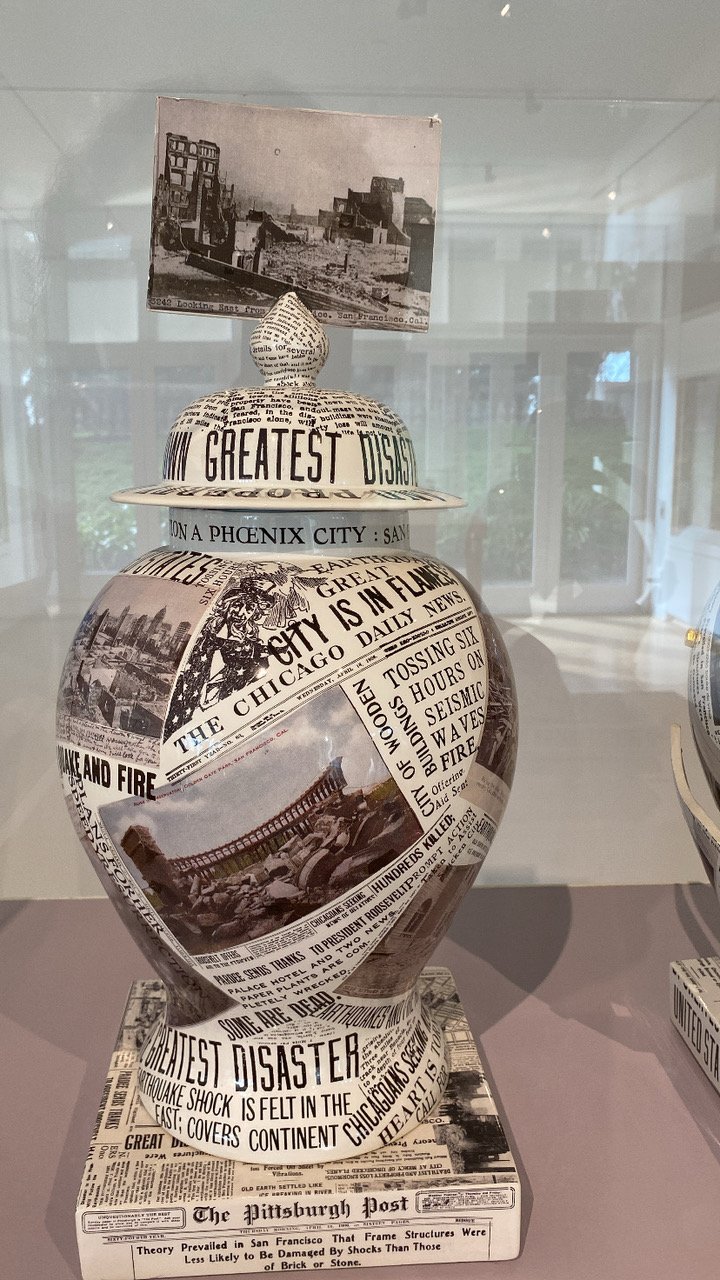San Francisco, a Cultural Cornucopia
Newsletter 01.28.2024
Bienvenue and welcome back to Musée Musings, your idiosyncratic guide to Paris and art, reporting for the last time from San Francisco. Well the last time until next time! This week has been packed with cultural and intellectual (as well as culinary) pleasures. Almost every day was another adventure. On Sunday, I met Ginevra after she gave her very popular “Hippie to Hipster” tour of the Haight-Ashbury. We bought a sandwich at Gus’s which we shared in the park, sitting on big yellow wooden chairs, overlooking the Conservatory of Flowers.
We decided to visit the California Academy of Sciences and check out the dinosaur exhibition which was closing soon. I have always found it difficult to imagine how creatures so big could have lived on Planet Earth so successfully for so long. Tiny brains, huge bodies, obliged to eat constantly. What was the point?
Of course, we paid our respects to Claude, the albino alligator. Then wandered through Ginevra’s favorite exhibit - the Rain Forest, attracting butterflies as we walked. On another floor, we watched the stingrays gliding along - gray handkerchiefs with black eyes. You can experience the aquarium from a variety of vantage points - above, below, alongside. Any way you look at it though, you see big fish swimming around solo and little fish swimming around in schools. And tiny fish with dots on their tails to resemble eyes, hoping predators are fooled and will take a bite of their hindquarters rather than their heads.
We went up onto the living roof where architect Renzo Piano and environmental engineers created a system that keeps the building’s temperature regulated no matter the season and eliminates a lot of bad stuff in the process. All on a roof that evokes the seven hills of San Francisco.
The only creatures who seem to have gotten short changed when the old academy building was swallowed up by this new, improved version 15 years ago, are the penguins. In the old penguin display, visitors sat on bleachers watching the penguins go about their busy lives. Now visitors stand around and the penguins do too. All of us listless, bored, under a fake sun, with nothing to do. (Figs 1-5)
Figure 1. World’s Largest Dinosaurs exhibition, California Academy of Sciences, San Francisco
Figure 2. Claude the albino alligator with his friend (?) an unnamed turtle, CAS
Figure 3. Ginevra in the Rain Forest, attracting butterflies, CAS
Figure 4. Ginevra on the Living Roof, CAS
Figure 5. Penguin display, (fake sky) CAS
On Tuesday, Ginevra and I walked back to Golden Gate Park, this time to visit the De Young Museum, across the concourse from the Academy of Sciences. We were there to see an exhibition that had just opened. I hadn’t even known about it until Jacquelyn told me to see it. The only ads I’ve been getting on instagram are for the next exhibition, the one that opens in March, on the fashion photographer, Irving Penn. The exhibition was a good prelude.
Called 'Fashioning San Francisco: A Century of Style,’ the exhibition, according to the museum, offers a way to explore the history of San Francisco through fashion. The connection between San Francisco’s wealthy women and French designers goes back to the Gold Rush (1849) and was interrupted only momentarily by the 1906 Earthquake and fire that destroyed most of the city. The City of Paris Department Store played a pivotal role from the beginning by bringing all the latest French fashions to the city. The store first opened in 1850 and opened on Union Square in 1896. Where it stayed until 1976 when it was transformed into a Neiman-Marcus.
This exhibition includes 100 different pieces of clothing - from those designed by classic French designers like Coco Chanel, Christian Dior and Yves St. Laurent to English and Japanese avant grade designers like Vivienne Westwood, Alexander McQueen and Comme des Garçons. According to the museum, the clothes on view - often worn by the women who lent them to the exhibition or gave them to the museum, “reflect San Francisco’s long-standing tradition of self-expression through fashion”. Ginevra even saw a piece on exhibition that she had tried on at Barney’s a few years ago, that I couldn’t convince her that she needed! (Figs 6-11)The exhibition space itself is somber, even minimalist. Maybe to highlight the outfits, maybe restricted by budget.
Figure 6. Fashioning San Francisco: A Century of Style, De Young Museum
Figure 7. Fashioning San Francisco, De Young Museum
Figure 8. Infanta Gown by Ralph Russi, based on painting by Spanish artist, Valezquez
Figure 9. Gown by Vivienne Westwood
Figure 10. Fashioning San Francisco
Figure 11. Ginevra trying on same top at Barney’s with Nicolas looking on and me in background, 2017
A real treat awaited us at the end of the exhibition. With the help of SnapChat, after you’ve seen the exhibition, you are invited to stand in front of a mirror and, magically find yourself wearing one of the gowns you had just been admiring. Three different gowns, including the iconic one designed by Yves St. Laurent for his first Dior collection that was immortalized in a photo by Richard Avedon. (Figs 12 - 18)
Figure 12. Dior Gown
Figure 13. Dior gown worn by Dovima photographed by Richard Avedon
Figure 14. Me in Dior Gown
Figure 15. Ginevra in Dior gown
Figure 16. Gown by Kaisik Wong, 1985
Figure 17. Ginevra in Kaisik Wong Dress
Figure 18. Me in Gown channeling Madonna singing Don’t Cry for Me Argentina from Evita …
After all that fashion, we needed a contemplative break. Which was easy enough to find since the de Young is just next door to the Japanese Tea Garden, the oldest public Japanese garden in the United States. Spread over nearly five acres, there are paths and ponds, plants and trees, water elements and rock formations. There’s a teahouse as well Buddhist and Shinto sculptures and structures. The tea garden began as a temporary display - the Japanese Village and Tea Garden for the 1894 World’s Fair. For nearly 50 years, until 1942, it was maintained by the Hagiwara family, descendants of its first gardener. But that year, the family was evicted and sent to an internment camp. After some really shameful and racist modifications, the garden’s Japanese heritage was restored in the 1950s. And the Hagawara family’s key role in developing the garden was/is acknowledged. (Figs 19 - 22)
Figure 19. Japanese Tea Garden
Figure 20. Japanese Tea Garden
Figure 21. Japanese Tea Garden
Figure 22. Ginevra on bridge in Japanese Tea Garden
On Thursday, Nicolas had some time off from the glass studio, so we went to the Legion of Honor to see the Bouke de Vries ceramics exhibition. I had never heard of de Vries but there is a piece by him at the museum’s entry that intrigued me when Ginevra and I were there to see the Botticelli exhibit. I had to go back and see the other pieces. De Vries is a Dutch ceramicist who trained as a porcelain restorer. Now, instead of restoring broken ceramic vessels, he makes art out of them. He repurposes their brokenness rather than repairing it.
It’s a small exhibition featuring eight works commissioned by the museum. Among them are what de Vries calls, “memory vessels”. These are glass recreations of broken ceramic vessels into which de Vries places the broken pieces of those vessels. It’s like a jigsaw puzzle, but with pieces abutting one another rather than interconnected. There is a reference to what the broken ceramics have already been, but what they no longer are, and what they will never be again.
The exhibition includes three vases inspired by the 1906 San Francisco earthquake. Broken ceramics are an apt metaphor for an earthquake prone city and its fault lines. One vase is called ‘Before the Earthquake,’ the second is ‘During the Earthquake’ and the third, seemingly patched together, is ‘After the Earthquake’. With these three vases de Vries created new objects, ones that did not exist before but ones that evoke an earlier time.
One final piece, a broken vase filled with desiccated lemons. As if it had been the subject of a 17th century Dutch Still Life. It’s very clever and very beautiful. One critic describes de Vries as “(u)sing the skills of the conservator and… strong adhesives, (to) put Humpty Dumpty back together again.” (Figs 23 - 29)
Figure 23. Bouke de Vries, Memory Vessel
Figure 24. Book de Vries, Memory Vessels
Figure 25. Bouke de Vries, Before the Earthquake
Figure 26. Bouke de Vries, During the Earthquake
Figure 27. Bouke de Vries, After the Earthquake
Figure 28. Bouke de Vries, Ceramic Vessel and Lemons
Figure 29. Dutch still life painting of Chinese vase and citrus fruit
On Thursday I also attended my final session as a guest of the Proust Society of America, San Francisco Chapter book group. The group meets at the Mechanics Institute, San Francisco’s version of the American Library in Paris - a private library with a lively calendar of speakers and book clubs as well as a lending library. The Proust Society meets twice a month to make its way through Proust’s opus. This semester, the group of 25 discussed Book 2, À l'ombre des jeunes filles en fleurs (Within a Budding Grove) which I read with my Paris Proust group last fall. What fun it was to attend these meetings. The discussions were lively and thoughtful. And the group’s leader and Proust Society director, Mark Calkens, was just fabulous! So knowledgable, so engaging. Inspired, I’ve made plans to visit Balbec, aka Cabourg, where much of the action in Book 2 takes place and where Proust stayed in 1907. Like Proust and the book’s narrator, I’ve booked to stay at the Grand Hotel!
This year, contrary to the bad press from newspapers like the NYT, I found San Francisco to be more charming than it has seemed for a while. The weather surely had something to do with it. Walks to museums or just long walks for the pleasure of walking were good preparation for the Camino ahead. The exhibitions have been first rate. Ragnar and Kusama at SFMoMA, Murakami at the Asian Art Museum, Botticelli and Bouke de Vries at the Legion of Honor and the Fashion Exhibition at the De Young. The Japanese Tea Garden was a calm oasis in the middle of a busy park and the California Academy of Sciences was a respite from all that art!
My culinary adventures weren’t confined to market hauls, vegetable boxes and Alison Roman recipes. There were coconut and lemon tarts from Tartine, delicious sandwiches from Gus’s to share in the park and al fresco dining at Arbor (Hayes Valley), Radhouse (Fort Mason) and Roam (Pacific Heights). And of course occasional stops at Dandelion Chocolate shop on Fillmore Street. (Figs 30-34) Gros bisous, Dr. B.
Figure 30. Pizzole with all the fixings, recipe, Alison Roman
Figure 31. Beets with pickled onions, toasted walnuts and yogurt/buttermilk sauce, recipe: Alison Roman
Figure 32. Coconut Tart, Tartine
Figure 33. Lemon Tart, Tartine
Figure 34. Dining al fresco with Ginevra & Nicolas at Arbor, S.F.
Copyright © 2024 Beverly Held, Ph.D. All rights reserved
Dear Reader, I hope you enjoyed reading this article. Please sign up below to receive more articles plus other original content from me, Dr. B. Merci!
And, if you enjoyed reading this review, please consider writing a comment. Thank you!
